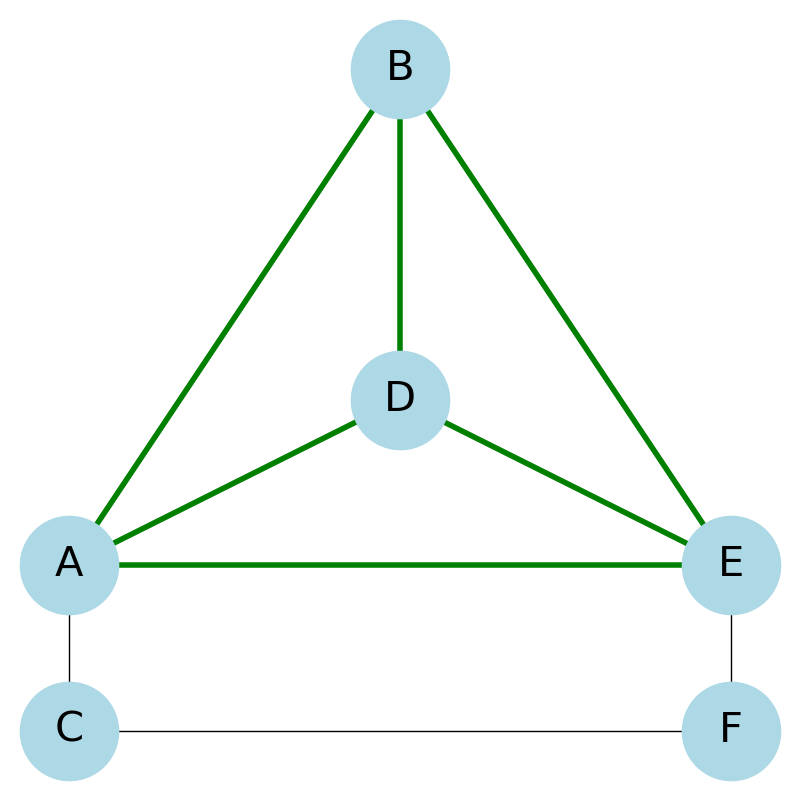Advent of Code 2024 - Day 23: LAN Party
1 2 3 4 5 6 7 8 9 10 11 12 13 14 |
from advent import parse, words, nx, combinations G = nx.Graph(parse(23, words)) part1 = lambda: len({ tuple(sorted((v, neighbors[0], neighbors[1]))) for v, _ in nx.triangles(G).items() if v[0] == 't' for neighbors in combinations(G[v], 2) if G.has_edge(neighbors[0], neighbors[1]) }) part2 = lambda: ",".join(sorted(nx.max_weight_clique(G, weight=None)[0])) # --------------------------------------------------------------------------------------------- assert part1() == 1151 assert part2() == 'ar,cd,hl,iw,jm,ku,qo,rz,vo,xe,xm,xv,ys' |
Graph Clique
A clique in a graph is a set of nodes that are fully connected. For example, in the following graph, the set of nodes { A, B, D, E } form a clique.

Here’s the code used to create that image. I had to use custom positioning to get a nice layout.
1 2 3 4 5 6 7 8 9 10 11 12 13 14 |
from advent import nx, plt G = nx.Graph([ ('A','B'), ('A','C'), ('A','D'), ('A','E'), ('B','D'), ('B','E'), ('C','F'), ('D','E'), ('E','F') ]) clique_edges = [ ('A','B'), ('A','D'), ('A','E'), ('B','D'), ('B','E'), ('D','E') ] pos = { 'A' : (-1, -5), 'B' : (0, 10), 'C' : (-1, -10), 'D' : ( 0, 0), 'E' : (1, -5), 'F': ( 1, -10) } plt.figure(figsize=(8, 8)) nx.draw(G, pos, with_labels=True, node_color="lightblue", node_size=5000, font_size=30) nx.draw_networkx_edges(G, pos, edgelist=clique_edges, edge_color="green", width=4) plt.show() |
Solution
As I mentioned before in this series, I chose Python this year to become more proficient with both the language and the ecosystem, so I simply used the networkx graph library to solve both parts of today’s puzzle.
For part 1 the algorithm is:
- Iterate over all the nodes in triangles that start with
t - For each combination of 2 neighbors that are connected to each other…
- Sort the 3-tuple for uniqueness, and add to a
set - Return the number of unique 3-tuples
For part 2 the algorithm is:
- Compute the maximum clique (set of nodes that are connected to every other node in the set)
- Sort the list of nodes
- Join with commas
New Python Concepts
Graph().has_edge()nx.max_weight_clique()nx.triangles()
Conclusion
Python delivers with a very functional graph library and comprehensions!